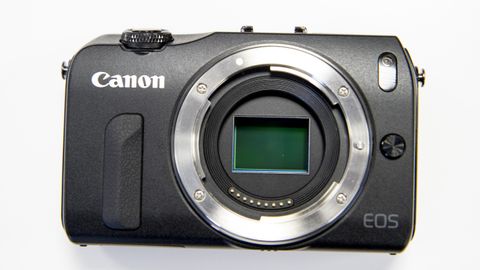Why you can trust TechRadar
One of the Canon EOS M's major drawbacks is its slow focusing speeds. Using the original firmware, we found that the speed of the camera was very sluggish, especially compared with other excellent compact system cameras on the market, most notably from Panasonic and Olympus.
In an attempt to address that, Canon has issued a new version of firmware that can be installed via a free download. This makes focusing much quicker, and although it still doesn't have the excellent speeds of something like the Olympus E-P5, for instance, it's much more acceptable and could even be described as quick in good light situations.
As the light drops, there is more hunting around for focus, but generally speaking, the camera is now much quicker and more accurate than before, making using it less frustrating than previously.
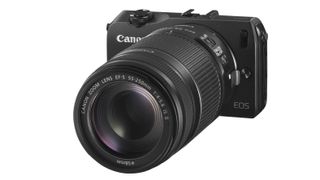
When using the camera in conjunction with the lens mount adaptor to use existing EF/EF-S lenses, focusing speeds also drop somewhat, but again, in good light it's acceptable if not super fast.
The APS-C format sensor and Digic 5 processor show their mettle in the quality of the images that the M produces. They have plenty of detail and noise is controlled well from ISO 100-3200. Above this value JPEGs start to look a little soft at 100% on-screen and are best restricted to around A4 size.
As we'd expect, better results are possible at ISO 3200 and 6400 if raw files are recorded and processed with bespoke noise reduction to preserve details.
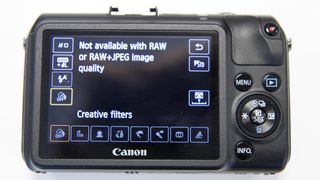
We recommend staying within the native sensitivity range (ISO 100-12,800) and only using the ISO 25,600 (equivalent) expansion setting for emergencies.
Maintaining image quality to the corners of the frame is more of a challenge for the M because the lens is closer to the sensor, and this increases the likelihood of coma distortion, vignetting and chromatic aberration at the periphery of the image.
However, our test revealed that with the EF-M 18-55mm lens mounted, the M captures better image quality across the frame than the 650D with the EF-S 18-55mm kit lens mounted.
Doubtless, this is the result of the superior build (and we assume better optics) of the EF-M lens.
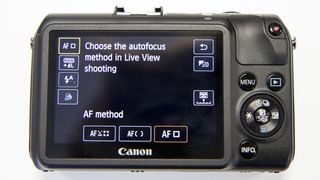
Canon cameras' automatic white balance systems can usually be relied upon to capture colours that reflect the atmosphere of the scene, with a tendency towards warm notes.
With the EOS M even shots taken in overcast conditions can look warm whether they were taken using the Auto or Daylight white-balance setting.
While this may not be a completely accurate representation of the scene it usually results in pleasant images and the colour shift is likely explained by Canon's perception of its target audience's preferences.
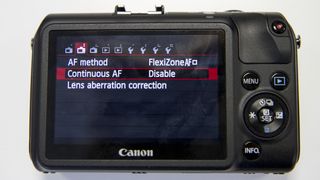
We also found that the M's real-time Evaluative metering system does a good job in most situations, only faltering in very high-contrast conditions when there is a tendency to underexpose to protect the highlights.
Canon's new STM lenses use a stepper motor which gives slower, smoother focusing when shooting video.
Unfortunately, this has a knock-on effect for the M when shooting stills as when the 18-55mm kit lens is mounted the autofocus system lacks the speed of some competing cameras such as the Panasonic GF5.
In low light there's a pronounced back-and-forth adjustment of focus. This is also sometimes discernable (though less of an issue) in good light as well, and it slows down the M's Touch Shutter feature that sets the camera to focus and fires the shutter with a touch of the finger on the subject on the LCD.

Is there a moral imperative for businesses to share data?

Why sovereign AI infrastructure is driving worldwide adoption of Generative AI

Real life 6G speed tests revealed by Japanese tech giants — 100Gb/s transmissions could become the norm for mainstream wireless network data transfer within a few years
